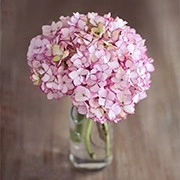Cherry Joy

Cherries are one of those small fruits that pack a big punch. They come from the Prunus genus, which includes many trees and shrubs.
When we think about cherries, the ones we usually see in the market are European sweet cherries. There are also European sour cherries, but they are mostly used for cooking rather than eating fresh.
Sweet cherries can be red, golden, or black, and each color brings a slightly different flavor and texture. Learning about cherries helps us enjoy them in many ways and appreciate these little gems even more.
The Sweet Cherries We Love
We often reach for sweet cherries when we want a fresh, juicy snack. Red cherries are the most popular—they’re bright, firm, and perfectly balanced in sweetness. Golden cherries are softer and milder, with a delicate fragrance that makes them great for fruit salads or just eating fresh. Black cherries have a richer, more intense flavor, making them ideal for desserts or jams. Sweet cherries aren’t just tasty—they are full of nutrients like vitamin C, potassium, and antioxidants. A handful of cherries can satisfy our sweet cravings while giving our body a boost.

Sour Cherries and Cooking
Sour cherries may not be our first choice for snacking, but they have unique culinary uses. Their tart flavor is perfect for pies, sauces, preserves, and even drinks. When we cook with sour cherries, their bold taste can elevate simple recipes into something special. To get the best flavor, we pick cherries that are firm, plump, and deeply colored. These cherries might be too sour for eating fresh, but they transform beautifully in the kitchen, showing us that every type of cherry has its own purpose.
How We Pick the Perfect Cherry
Picking cherries can be fun, but we can make it smarter. First, we look for firm cherries without blemishes or wrinkles. Soft spots usually mean overripe fruit. Next, the color helps guide us: red for classic sweetness, black for richer flavor, and gold for a gentle, fragrant taste. A quick sniff can also tell us a lot—a fresh, fruity aroma usually means the cherry is ripe. Don’t forget the stems! Cherries with green stems are fresher and tend to last longer after we buy them.
Storing Cherries Properly
We want cherries to stay fresh as long as possible. The best way is to store them in the fridge, unwashed, in a ventilated container. Washing too soon can speed up spoilage. Typically, cherries last about a week this way. If we want them to last longer, freezing works great. Wash and pit the cherries, then store them in an airtight bag. Frozen cherries are perfect for smoothies, desserts, or a refreshing snack straight from the freezer. This way, we can enjoy cherries even after the season ends.
Creative Ways to Enjoy Cherries
Cherries are versatile and fun to eat. Fresh cherries are great on their own, but we can also add them to yogurt, salads, or desserts. Blending them into smoothies creates a refreshing, fruity drink, while cherry sauces can make pancakes or ice cream extra special. Some people even add cherries to sparkling water for a natural fruity twist. Their vibrant colors and sweet-tart flavor make every dish look and taste better. Experimenting with cherries can turn everyday meals into something exciting.
Juicy Joy
Lykkers, cherries may be small, but they bring big smiles! Whether we enjoy red, golden, or black cherries as a snack or cook with tangy ones, they add sweetness, color, and fun to our day. By picking the freshest cherries, storing them properly, and trying new ways to enjoy them, we can make every bite feel special. Next time we hold a basket of cherries, let’s savor each juicy bite and celebrate the simple joy they give us!
The Basics: How to Choose Cherries
Video by WebMD

 · Food Team
· Food Team